Solar PV power generation does not produce CO2 emissions because it generates electricity using only solar energy.
It does not produce any other waste, wastewater, noise or vibration associated with power generation.
Supplying green electric power generated by solar PV will contribute to RENOVA’s efforts in achieving its goal of carbon neutrality by 2050.
Examples of Sustainability Initiatives in Solar PV Power Generation
RENOVA places emphasis on minimizing the impact of the design and construction of solar PV power plants on the surrounding environment.
We are working to reduce our environmental impact by reducing waste and emissions generated by construction and operation as much as possible, and promoting recycling.
In the process of conducting our business operations, we aim to achieve harmonious coexistence and prosperity together with local communities.
To do so, we believe it is important to gain a thorough understanding of the needs of local communities through dialogues.
Initiatives to Achieve Carbon Neutrality
-
Global and Regional Environmental Initiatives
Maintaining Local Environments
We are engaged in initiatives to minimize the impact of the construction of power plants on local environments as much as possible.
To preserve as much of the natural surroundings of power plant sites as possible, we make maximum effective use of the natural the topography of the land in our designs.
As a result of making use of the existing shape of mountain slopes in the construction of the Karumai West and East Solar Power Plants, the total length of the outer perimeter fence reached 28 km at Karumai East and 18 km at Karumai West, making them two of the largest solar power plant sites in Japan.
In addition, by minimizing deforestation, the ratio of remaining forest reached nearly 50%.
Our other power plants are also designed and built making the best use of the original natural surroundings and topography.
These initiatives reflect our basic approach to the power generation business using the blessings of local nature.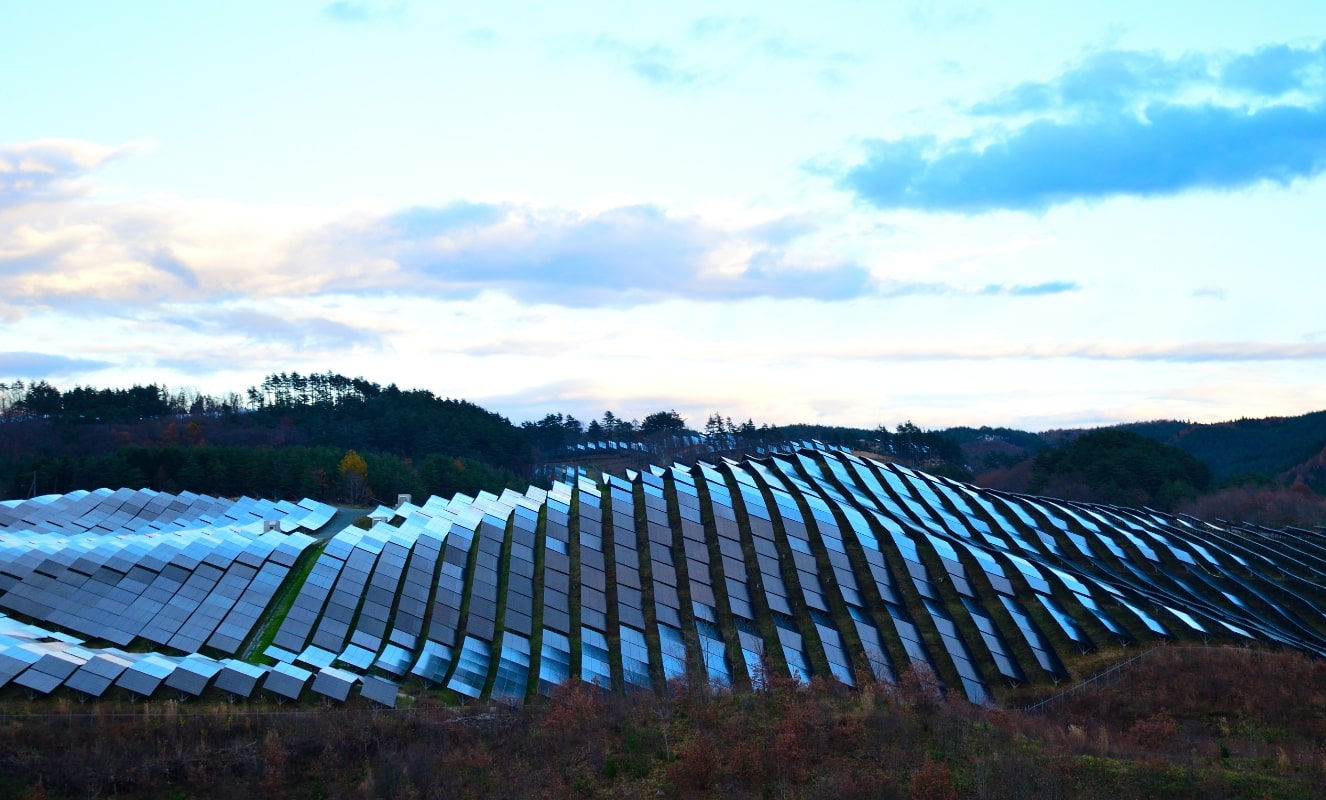
Solar panels utilizing the existing topography
Reducing Environmental Impact
Our policy of making the best possible use of natural surroundings and topography allows us to minimize construction work and earthworks.
This also reduces the need to operate heavy construction machinery, and environmental impacts such as CO2 emissions generated by the operation of heavy machinery has also been reduced as a result.
Making maximum use of the original natural surroundings and topography also minimizes damage caused by natural disasters such as typhoons and heavy rainfall.
For example, during the torrential rains of July 2020 (the 2020 Kyushu floods) which caused extensive damage to the Kyushu region, parts of Ozu Solar and Kokonoe Solar were damaged, but not to such an extent that there was any impact on business operations.Accumulating Disposal Costs for Solar PV Power Generation Equipment
We are accumulating funds towards the cost of disposing of solar PV power generation facilities after the end of their period of operation in compliance with laws and regulations, and are making preparations so that sites can be handled appropriately.

Solar panels utilizing the existing topography
-
Initiatives Aimed at Realizing a Recycling-Based Society
Construction methods taking advantage of original topography wherever possible enable us to minimize the amount of mud, sand and felled trees that accompany the construction of our power plants.
As a result, we are engaged in efforts to minimize the amount of mud, sand and felled trees disposed of as much as possible.
As is the case with our solar power plants at Karumai West and East, Nasukarasuyama, Ozu and Hitoyoshi, when constructing on the slopes of mountains, we utilize the existing topography as much as possible, and reduce the amount of earthworks—aside from the creation of retention basins—to the greatest possible extent.
We reuse the soil, sand and debris generated by earthworks in constructing small dams or weirs for retention basins (adopting the double-wall method) and for the basin walls (BLN construction method).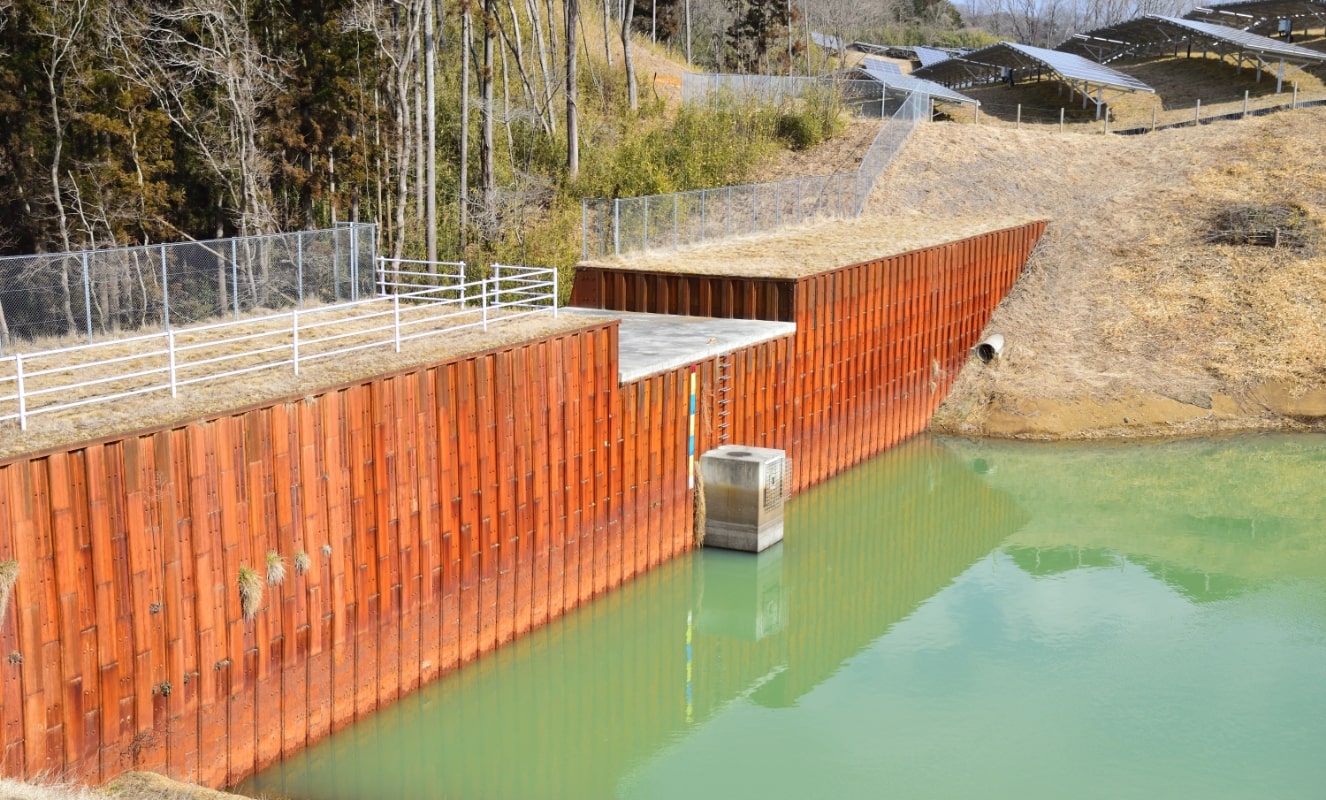
Weirs adopting the double-wall method
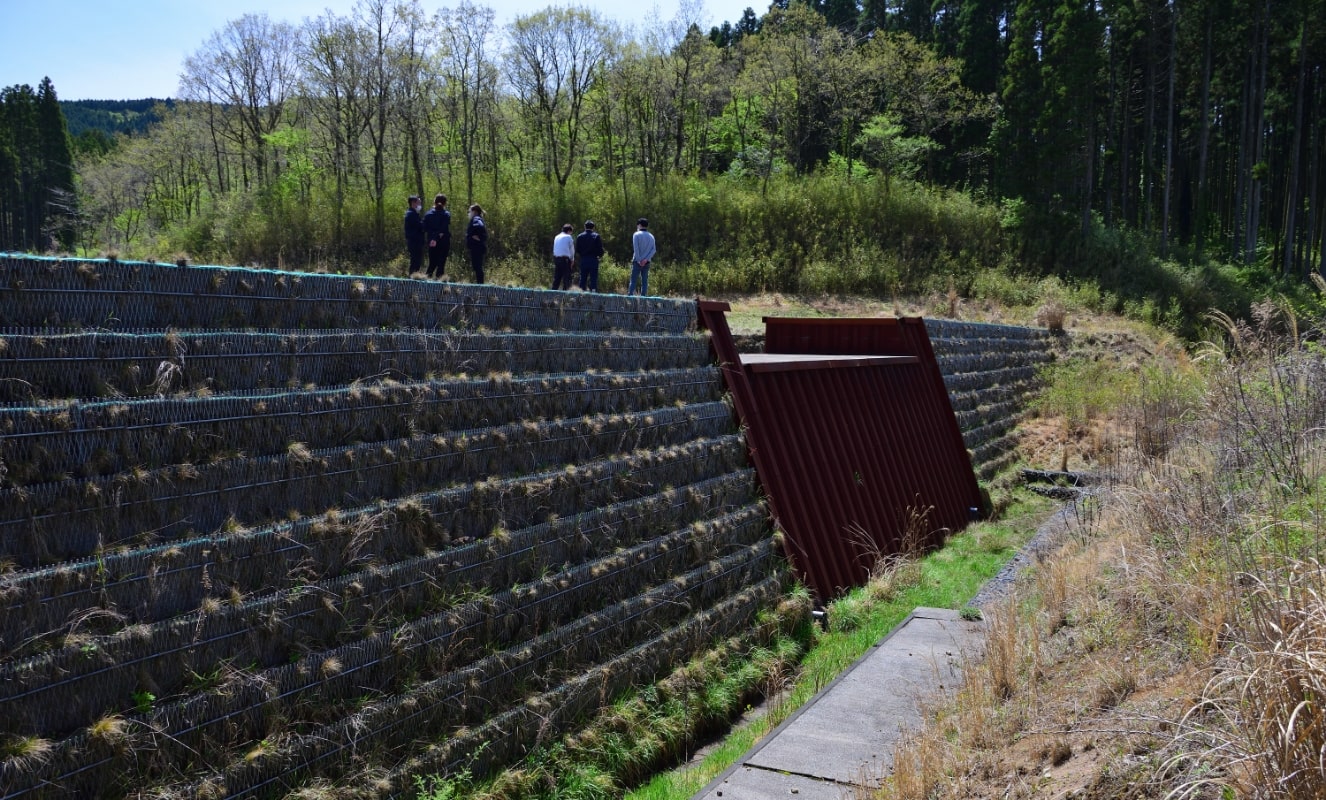
Basin walls using BLN construction method
-
Conservation of Biodiversity
We are engaged in initiatives to minimize the impact of the construction of solar power plants on local ecosystems.
Various conservation activities are carried out before the construction of each power plant, including the transplanting of rare plants (listed in the Red Data Book of each prefecture) from the power plant site to off-site forests.
At the Nasu Shiobara Solar Power Plant, we held a monthly Natural Environment Committee meeting for a period of one-year prior to development work, in consideration of the possibility of goshawk nesting sites.
Before commencing construction work, we proceeded with the project under the guidance of the prefectural government while receiving advice on the conservation of wildlife and rare species from specialists and experts such as the Tochigi branch of the Wild Bird Society of Japan (WBSJ) and academic researchers.
To protect goshawks, we are working to conserve and protect the local ecosystem by starting construction work after the nesting season and installing snake and lizard houses on the site.
At Yokkaichi Solar Power Plant, together with experts, we installed a biotope adjacent to the power plant to protect rare species that inhabit the area.
We work with people in the local community to transplant plants and maintain the ecosystem.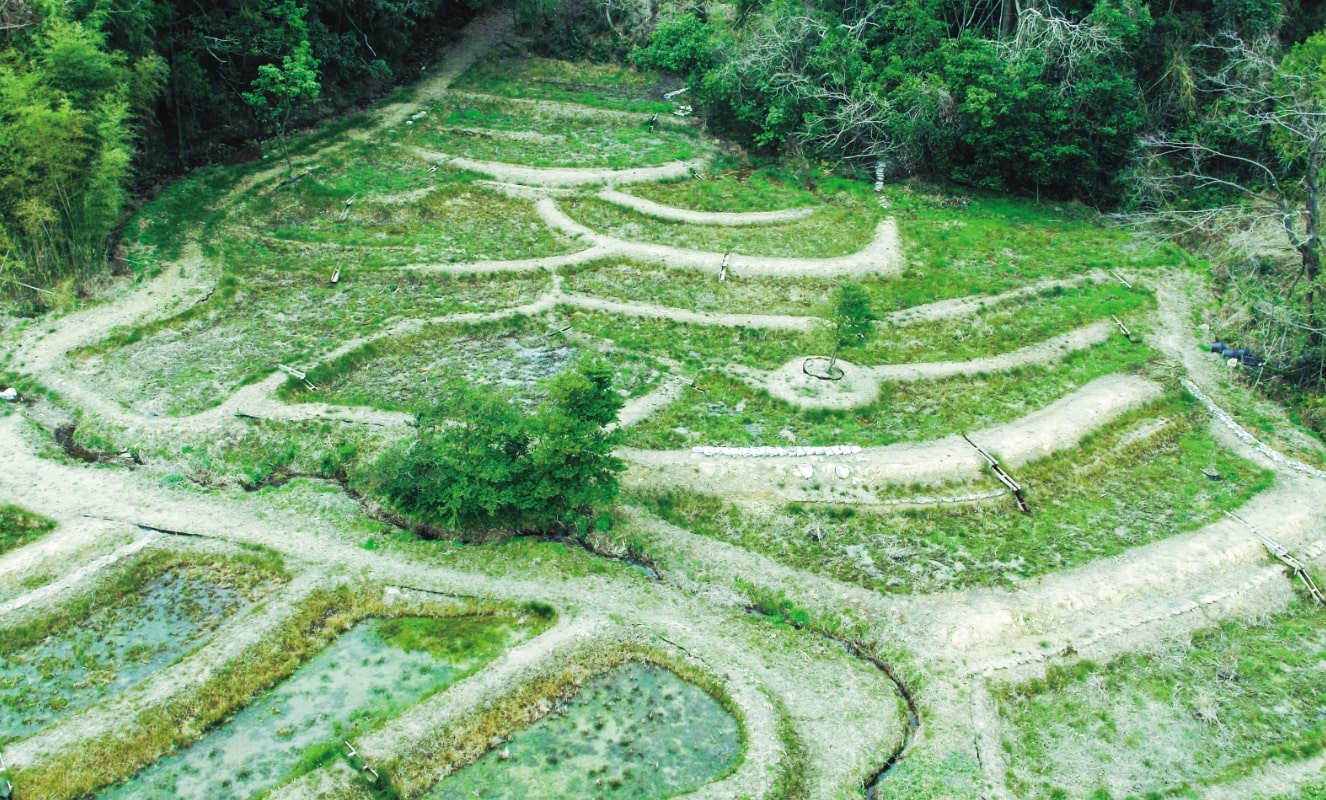
Biotope to protect rare species
-
Sincere Communication with Local People and Contribution to Local Communities
Through local community dialogues, we listen to the requests of local people and construct safe and secure power plants.
In the construction and operation of our power plants, we commission local companies to perform work, contributing to the creation of employment opportunities in the local community and the revitalization of local economies. -
Activities Contributing to History, Culture and Liveliness in Local Communities
We also contribute to children’s environmental studies using our power plants.At Karumai West and East Solar Power Plants, we cooperated in the installation of an observation facility called Millet Park Solar House.
We provide opportunities for local junior high and high school students to learn about the environment.
Futtsu Solar Power Plant also accepts social studies tours.
Futtsu Solar Power Plant is registered as a member of the Chiba Environmental Learning Support Team, which supports environmental studies at schools and community groups in Chiba Prefecture. The plant utilizes its adjacent observation deck and exhibition panels to conduct study classes on renewable energy while experiencing the vastness of its 40MW solar power plant facilities.
By sponsoring and participating in events such as festivals and marathons in local communities in the vicinity of each power plant, we are also deepening ties with local residents.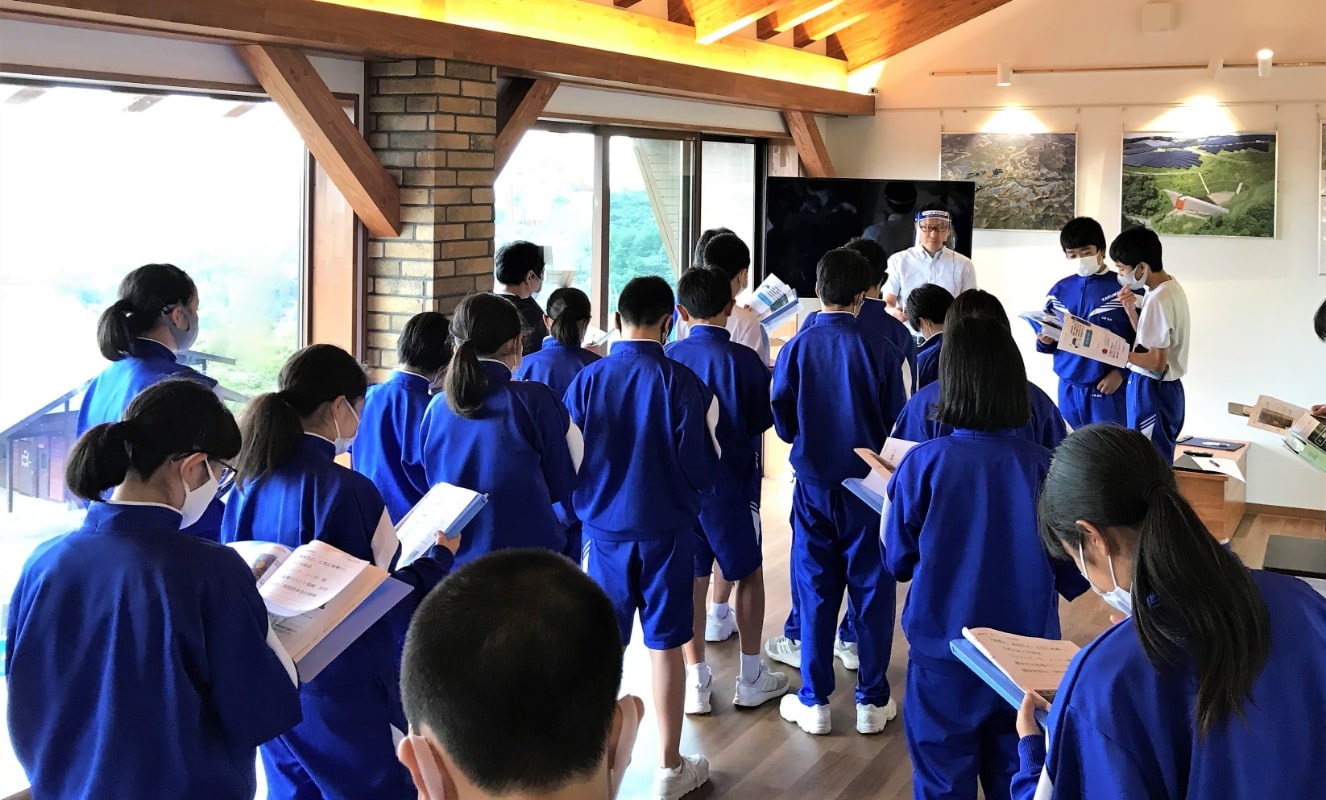
Environmental studies at Karumai
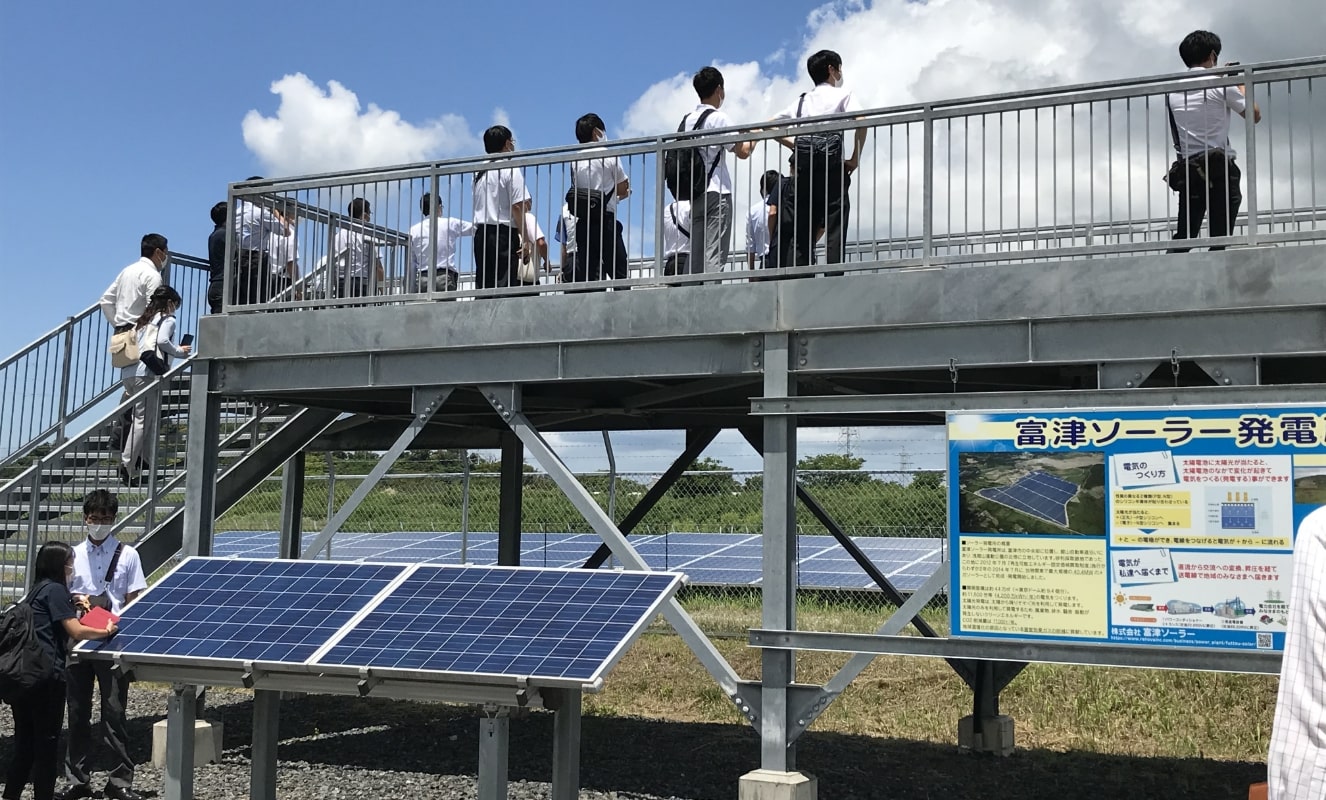
Environmental studies at Futtsu
